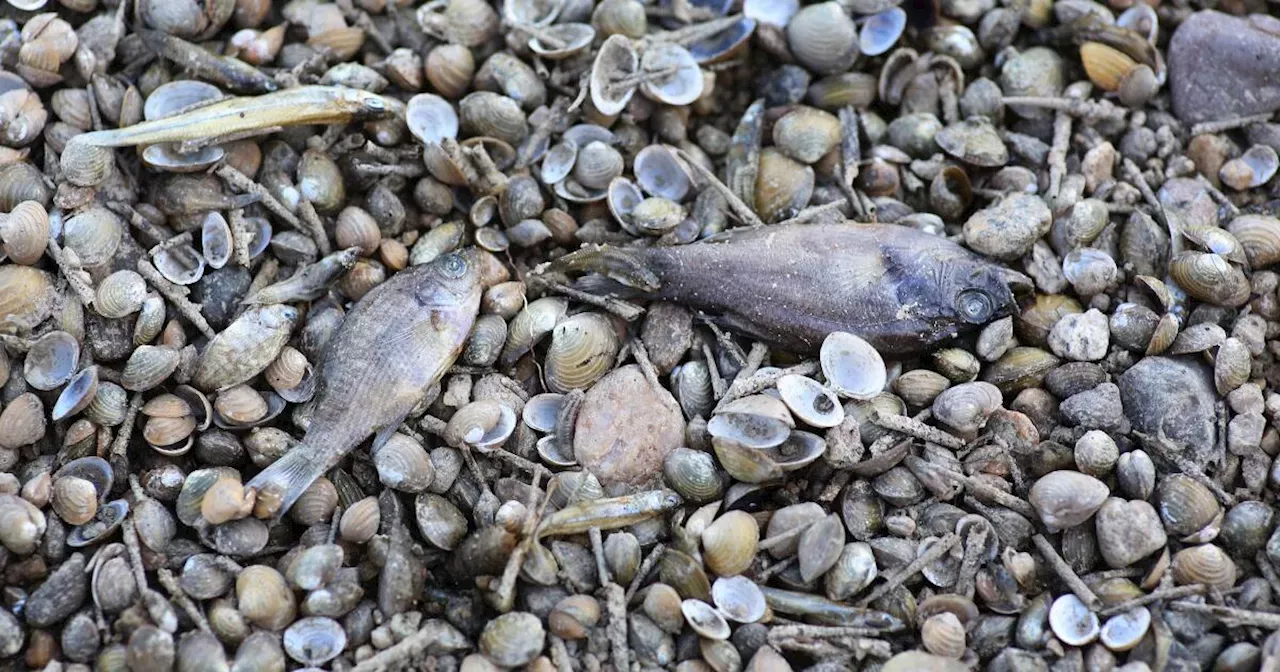To fence or not to fence, that is the question. And it's a question that has divided residents of St. John's for more than a decade.
In 2013, the St. John's Port Authority installed a temporary fence along the harbourfront. And in 2015, replaced that with a black metal fence.

The construction brought a slew of controversy, from city council upset to social media campaigns . The issue is still active. Just last year, Premier Andrew Furey lobbied to reopen the debate with the federal government.
Furey is not the only one wondering how the harbourfront might change. Cynthia Williams, who wrote her master's thesis in architecture at Dalhousie University on a new focus for the harbourfront, suggests removing the fence and rethinking how Harbour Drive might work if it was tailored to pedestrians and quality of life for local residents. "I think there [are] different solutions and different ways that we can tackle it," said Williams.
What would you change about the St. John's harbour? There's a lot of history to this story (and we'll describe it for you in detail soon), but first, please take a moment to tell us what you would do in the form below. CBC News will sort through responses we receive, and double back to you.
For her design, Williams suggests removing the harbour fence and on-street parking along Harbour Drive. Residents would have year-round access to the area, which would function like the annual pedestrian mall each summer on part of Water Street. That would be a real change from the status quo — and it's just one vision of what the harbour could be.
Cruise ships dock behind the metal fence that the St. John's Port Corporation installed on much of the north side. (Mark Quinn/CBC) How did the fence come to be? When the fence was proposed, the St.
John's Port Authority cited security reasons to explain why it was necessary. The St. John's Port Authority website states that "piers 9, 10, and 11 are active working piers that see a full range of industrial vessel supply and servicing; as well as hazardous works including welding, vessel maintenance, crane operations and other mechanical activities, just to name a few.
No similar commercial site would allow the intermingling of pedestrian traffic with industrial activity." Cynthia Williams redesigned the St. John's harbourfront as part of her master's thesis for her architecture degree.
(Submitted by Cynthia Williams ) It cost around $850,000 to construct and install the fence, and the city paid for half of that expense. The proposal was, to say the least, controversial. St.
John's Mayor Dennis O'Keefe even halted a 2012 council meeting because of protesters. For more than a decade, the fence has blocked pedestrian access to a large stretch along Harbour Drive. Overall, the fence covers about 50 per cent of the harbourfront.
That doesn't mean the fence will be in place forever. Last year, Furey publicly asked to revisit the conversation of the fence's necessity and spoke with Omar Alghabra, Canada's minister of transport at the time, about it. "Perhaps there will still need to be certain industrial areas that are fenced, or certain coast guard areas that are fenced, and fair enough," Furey told CBC News at the time.
"But to have a fence around the entire harbour doesn't seem to make sense to me and is difficult to reconcile when you look at some of the other harbours that we've talked about." Furey cited Halifax's and New York's harbours, which are larger but are both working ports with similar safety concerns. "It prevents access," he said.
"It prevents economic development in St. John's. People come to Newfoundland and Labrador because of our coastline and the beauty of it, and want access to it.
" The St. John's Port Corporation says the large metal fence along much of the north side of the harbour is necessary because of security concerns. (Sarah Antle/CBC) The unfenced stretch on the north side of the harbour is lined with restaurants and businesses, restricting access even further.
CBC News asked Sean Hanrahan, the president of the St. John's Port Authority, for comment. In an email, he said there is nothing to add to the conversation.
The early days For more than 500 years, St. John's harbour has been a working one, for fishing, trade, tourism and other industries. The business district of the harbourfront was once lined with finger piers on the south side of Water Street.
Even into the 1950s, much of the activity in St. John's harbour involved masted schooners and dories. This photograph, by Fred Ruggles, appeared in Life magazine in 1952.
(Courtesy of Archives and Special Collections (Coll - 241, 1.02.001), Memorial University of Newfoundland) International fishing fleets would enter the narrows and settle in the St.
John's harbour for business. Local fishermen would dock there. The finger piers were replaced by Harbour Drive and a paved harbourfront.
In 1965, the St. John's Port Authority took ownership. Over the years, the harbour became home to industrial activity, like the supply ships that work in the offshore oil industry and the container ships that hold many of the goods imported into eastern Newfoundland.
But the harbourfront wasn't just an economic powerhouse. It was also a social hub for people who grew up nearby. To many, the St.
John's harbour symbolizes home. "The waterfront represented St. John's," said retired fisherman Glenn Critch.
"Because everything then revolved around the waterfront." He's following in his family lineage. Harbour Drive was constructed in the 1960s to replace finger piers that darted into the harbour.
Until 2013, the public was allowed to walk most of the north side. (CBC) "Fishing is in my blood," said Critch, a fourth-generation fisherman who grew up on the south side of St. John's, where he could see his father work in the harbour from his family's window.
He said the harbour would be lined with boats, fitting in wherever they could get tied on. Those memories do not jibe with what he sees today — and the fence is part of the problem. "The waterfront was just open and they could walk and they could speak and you know, that kind of way.
But now...
I calls it the penitentiary wall because I don't see the need of it," said Critch. "I'll always feel that way." Rethinking the fence St.
John's Deputy Mayor Sheilagh O'Leary — never a fan of the fence — said the current metal structure was not what was proposed to council. "When we were, kind of, pitched this idea, the rendition was very different than what actually manifested," she said. A bench was installed to allow people to look at St.
John's harbour, but the harbour fence is in the foreground. (Sarah Antle/CBC) At the time of the proposal, O'Leary and then deputy mayor Shannie Duff opposed the construction of the fence, asking for more public engagement. They were outvoted.
The proposal suggested there would be a viewing area for people to see the water clearly and to sit and enjoy the surroundings. O'Leary says the reality feels more like a prison. "You sit down and you're staring at bars.
You feel like you're incarcerated," O'Leary said. "That's not a viewing area that is acceptable. So when the actuality of it came forward and of course city council was asked to contribute to it, that was before when the reality of what it was going to entail happened.
" O'Leary said she understands the security measures that need to be taken into consideration but she doesn't think the needs of yesterday are the needs of today. "That's not to deny that it's a working harbour because I know the arguments," she said. "We've already been down this road.
But there is a way to create a balance. And the only way that that can happen is if you have collaboration and dialogue." O'Leary said the Port Authority was the unilateral decision-maker in the fence going up.
Even though council paid for much of it, the fence is actually outside the city's jurisdiction. A trip down Memory Pier O'Leary remembers when the harbourfront had public access. She looks back at those times with nostalgia.
"I used to walk down here with my dad all the time on the harbour apron," reminisced O'Leary, who grew up in the 1960s and '70s. Glenn Critch, the fourth generation in his family to have fished from St. John's, describes the harbour fence as ugly and unnecessary.
(Darrell Roberts/CBC) Cynthia Williams, born and raised in St. John's, also remembers a nostalgia-filtered version of the harbourfront. When she was young, she said, she would walk along the harbour with her family eating ice cream cones.
And when she was older, she'd get coffee with her friends and sit on the harbourfront. When the fence went up, she said, she didn't want to hang out there anymore. "It felt like we had a barrier between the harbour and downtown.
And that's such an important relationship in our community." While the St. John's Port Authority has no plans to reconfigure or take down the fence, some people say there's a solution that could balance security issues with a cultural appreciation of the city harbour.
"To me, the solution is if you got the cruise ships coming in, you can put up the temporary walkway and everything for them to get in and out," said Critch, adding a similar method works in Corner Brook. Deputy Mayor Sheilagh O'Leary, who opposed the harbour fence when it was built, says what the city was promised differed from what was built. (CBC) "There's enough room on that that you could have vendors, you know, lined up on the waterfront .
.. especially when the cruise ships come in," he said.
"Something like it is in Halifax." Williams recently moved back to St. John's, equipped with a bachelor of environmental design and a master's in architecture from Dalhousie University.
In her thesis on reimagining St. John's, she was inspired by both her childhood and what she observed from living close to Halifax's giant harbour. "I would get a coffee, friends and I would go for a beer at the beer garden, we'd walk our dogs, all kinds of stuff.
So I started thinking when I was living there, you know, why didn't we do this in St. John's?" But she knows there are limitations to that comparison. Cynthia Williams looked at reimagining the St.
John's harbourfront while completing her architectural studies. (Curtis Hicks/CBC) "We can't copy and paste what happened in Halifax because we can't. Halifax has a much larger port and so much more area to be able to make it public," Williams said.
"I started thinking ...
how could we do this at a smaller scale in St. John's to make it successful?" The St. John's Port Authority's website says the fence blocks about fifty per cent of the harbour.
"Could we make it 25 per cent," Williams said, "and then could we take the other 25 per cent back to us?" Download our free CBC News app to sign up for push alerts for CBC Newfoundland and Labrador. Click here to visit our landing page ..



















